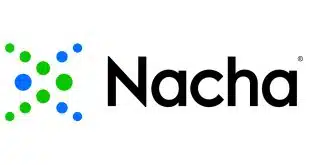Look for the real-time payments revolution to start in an unlikely place, the long-derided world of P2P payments, says Steve Mott.
Payment networks are seemingly locked in the physical world. They expect compensation and eschew risk as if P2P or any real-time debit mechanism will behave like plastic cards.
Steve Mott is principal at BetterBuyDesign, a payments consultancy based in Stamford, Conn. Reach him at stevemottusa@yahoo.com.
Hanging out in the weeds surrounding the mega-events rocking the payments industry, the web of P2P is getting woven. Fiserv Inc. combines ZashPay into Popmoney. Dwolla announces a real-time debit-access network for smaller banks and credit unions. The nation’s three biggest banks unfurl clearXchange—an industry P2P utility. Fidelity National Information Services Inc. (FIS) announces PayNet. And mobile-payments pioneer Obopay Inc. looks for a buyer.
What in the world is going on?
What’s happening might at long last be the awakening of the hidebound payments world to the revolutionary impact of digital payments. To a mostly disparaging industry, P2P connotes little more than a gimmicky payment option, a niche market at best. But the reality appears to be far different: P2P looms as the Trojan Horse that will usher a recalcitrant industry into a digital-payments world.
Money in the Bank
Such a destiny for P2P seems unlikely given its origins. For many, P2P used to mean “person-to-person” payments—a nuance that had such little marketplace take-up that PayPal—one of its first and most notable providers—didn’t even charge users for it. In recent years, it has taken on the techno-geek “peer-to-peer” mantle, extending its market reach and use cases, but obfuscating what it means.
It’s the essence of the P2P business proposition that makes it so disruptive, however. Once payments go fully digital, all the old inhibitors to fluid, efficient, and ubiquitous transacting—payment silos, walls between channels, restrictions on funding sources and destinations, and physical-world-based risk management—suddenly begin to dissolve.
All you need to do P2P—and digital payments generally—is a processing engine that slices and dices the data supporting digital transactions. Lots of different data sets and formats come in (funding sources); the “mix master” reconstitutes them appropriate to the application; then lots of different settlement conventions pop out (destinations). Simple.
So, if I can transfer money to my college kid on my cell phone while commuting to work, why can’t I pay his tuition bill the same way? Technically, the only difference is the level of risk management, owing to one transaction being tens of thousands of dollars, while the other one might be $100.
Risk management requirements are certainly important. The most likely venues for these payments are demand-deposit accounts. The key to managing risk with DDAs is doing as much of the funds access in real time as possible. Why? The big risk for payees is getting good funds. If the funding is deducted from the originating DDA with a real-time debit or hold, and those funds are sequestered for eventual transfer to the destination party, then that “promise-to-pay” is effectively money in the bank.
Real-time verification of the parties also mitigates a lot of the transaction risk of unauthorized or compromised accounts. If the trusted provider (including banks) knows either or both parties from prior customer relationships or usage, the likelihood that hackers are at work gets reduced significantly.
In the instance of unknown parties trying to transact for the first few times, it’s pretty easy to slow the funding transfer sufficiently to conduct additional vetting checks, apply compensatory controls (e.g., transaction and/or velocity limits until the parties are confirmed), or—gasp!—charge the users a reasonable fee for standing in on the risk on their behalf.
Surging Trojans
Some would undoubtedly ask at this point, “Don’t we already have rails that do this—like the electronic-funds transfer networks?” Certainly the EFTs have dipped their toes in these waters, with account-to-account, various forms of funds transfers, and even PINless-debit initiatives. Customer take-up has been modest, however (except in some bill-payment venues), and small businesses continue to do 60%-plus of their transactions by paper check.
And that’s the trouble. Payment networks are seemingly locked in the physical world. They expect compensation and eschew risk as if P2P or any real-time debit mechanism will behave like plastic cards. They seek to apply the cost structures from the last half-century of operations to the next generation of digital payments.
Similarly, their bank customers continue to try to foist the costs of their aging and duplicative ATM-debit infrastructures onto a market that doesn’t care about prolonging the lives of those expensive assets.
So most of the EFTs are reluctant to chase the much lower digital-payment cost structure down to sub-penny experiences because they live in abject fear of cannibalizing their existing product lines and stagnant revenue streams.
While porting P2P applications over the EFT rails seems like an obvious choice, providers can do real-time debit without them—either by tunneling into the core DDA system directly, or riding the automated clearing house rails (with some form of user authentication), or—most likely over the long run—transacting in the cloud.
Moreover, banks and credit unions of all sizes are coming to the realization that to maintain the DDA as the crown jewel of banking in digital venues as well as physical, they need to view it as their own product—and not Visa’s or MasterCard’s. Just one of the dozen forms of electronic access to debit accounts is via a debit card BIN. P2P can streamline and turbo-charge the other 11 modes of access in ways and manners that the banks can control, and price, as they wish.
When providers get done tinkering with consumer P2P payment use cases, look for the Trojans to surge out of the wooden horse and storm the small-business beachheads. That’s when digital payments will start to get real interesting. Then look for real-time debit solutions to permeate the walls of the entire legacy payments system.





